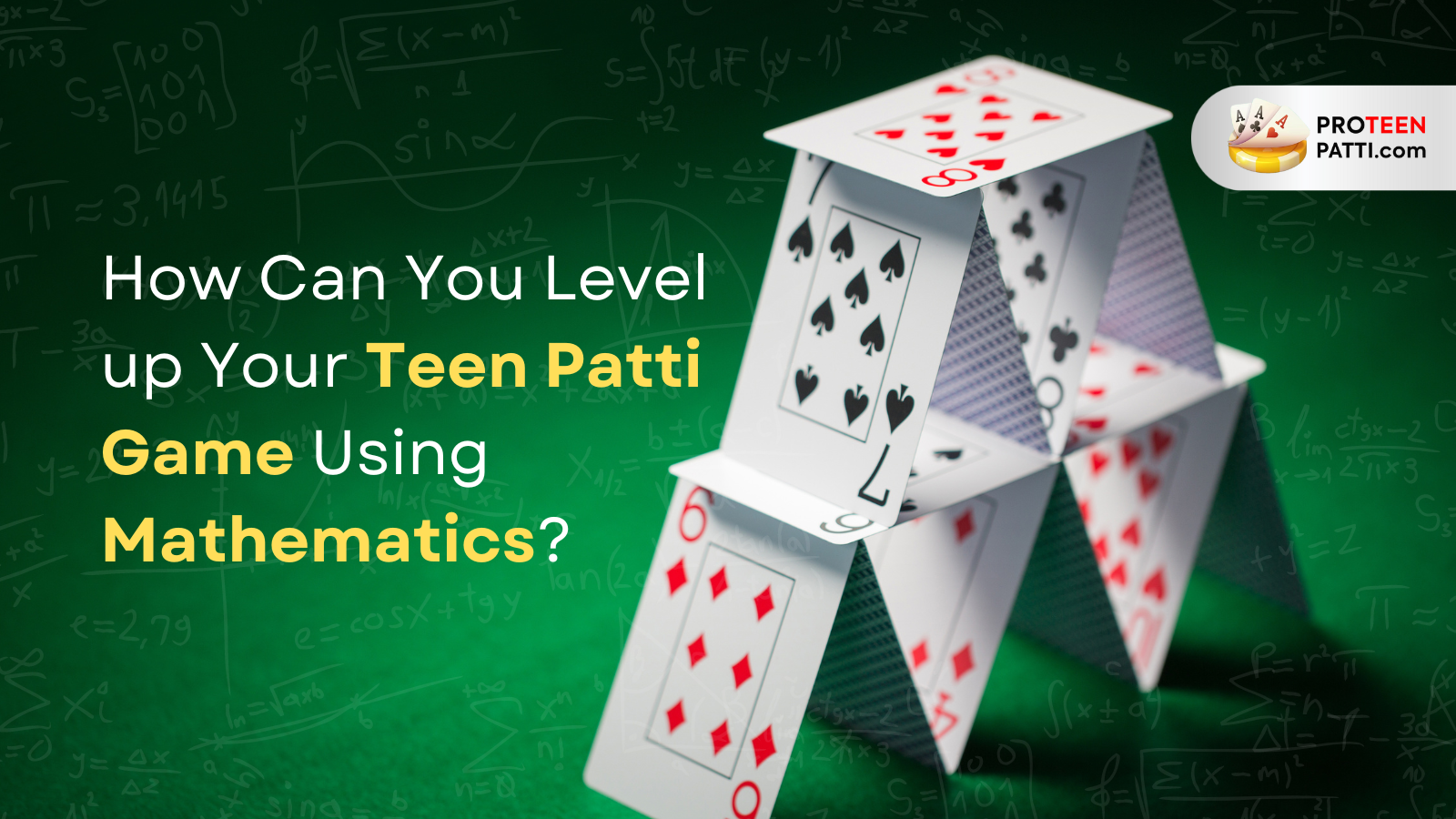How Can You Level up Your Teen Patti Game Using Mathematics?

Teen Patti game is a traditional exciting game that combines luck and skill both. Understanding the basic math behind the game can significantly improve your decision-making while a lucky streak can lead to victory. This article will explore the world of Teen Patti probabilities, helping you play smarter and potentially boost your winning chances.
Why do Cards and Ranks Matter?
Teen Patti uses a single deck of 52 cards without using Joker cards. Players aim to create the best three-card hand using their own cards and the common cards dealt face-up in the center. Take a quick look at hand rankings (highest to lowest):
- Trail (Set): Three cards of the same rank (e.g., 3♠️3♣️3♥️)
- Pure Sequence (Straight Flush): Three consecutive cards of the same suit (e.g., 10♣️11♣️12♣️)
- Sequence (Straight): Three consecutive cards of different suits (e.g., 7♦️8♣️9♠️)
- Color (Flush): Three cards of the same suit but not in sequence (e.g., 5♣️8♣️A♣️)
- Pair (Two of a Kind): Two cards of the same rank and a third card of any other rank (e.g., 5♦️5♣️K♠️)
- High Card: Three unmatched cards (winner determined by the highest card).
Understanding the Probability behind the Teen Patti
Probability refers to the likelihood of an event happening. In Teen Patti, it helps us calculate the chances of getting a specific hand, drawing a favorable card, or predicting your opponent’s hand strength. We express probability as a number between 0 (impossible) and 1 (certain).
How to Calculate the 3Patti Probabilities?
Take a look at some basic probabilities in Teen Patti and before doing that here is one more catch, you can apply these probabilities in Teen Patti real cash:
- Drawing a Specific Card: There are 4 cards of each rank (e.g., 4 Kings). So, the probability of drawing a specific King is 4 out of 52 cards, which equals 1/13 (approximately 7.69%).
- Making a Pair: You need two cards of the same rank from the remaining six cards after you receive your first card. The probability changes depending on how many cards of that rank are already dealt.
- Making a Flush: You need a third card of the same suit as your first two cards. There are 13 cards for each suit, so the probability of drawing a specific suit card is 3 out of 47 cards (approximately 6.38%).
How Can Teen Patti Combinations Lead to Victory?
Probability in Teen Patti goes beyond single events. We often need to consider combinations of cards. For example: What’s the probability of getting a pair in Teen Patti? here are some points to be considered:
- You have one card already dealt.
- You need two cards of the same rank from the remaining six.
- There are 4 ways to choose the second card (ignoring suit).
- Once you choose the second card, there are 3 remaining cards of the same rank (the third card).
So, the total number of favorable combinations is 4 x 3 = 12.
However, there are also 6 x 5 x 4 = 120 ways to choose any three cards from the remaining six.
Therefore, the probability of getting a pair is 12 favorable combinations divided by 120 total combinations, which equals 1/10 (approximately 10%). All these calculations are done and researched by experts at ProTeenPatti.
Understanding the mathematics behind Teen Patti can give you valuable insights into the game and improve your decision-making abilities. Remember, Teen Patti is a game of chance, and these probabilities are just a starting point. However, understanding these concepts can help you make informed decisions, like knowing when to call a bet or when to fold based on your hand strength and the potential rewards.
you can make more informed choices and increase your chances of success at the table by grasping concepts like probability and odds. Using this knowledge responsibly is key so Keep in mind! Online Teen Patti should be played for entertainment purposes only. So, next time you play Teen Patti, remember that there’s more to the game than meets the eye – there’s a whole world of math waiting to be explored!
